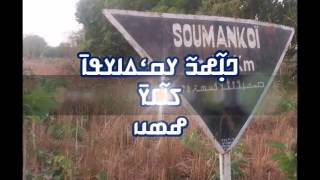Friday, 26 December, 2025г.
















Где искать: по сайтам Запорожской области, статьи, видео ролики
пример: покупка автомобиля в Запорожье
Lebanon لبنان Harissa حريصا Jounieh جونيه Byblos جبيل
Harissa (Arabic حريصا) is a mountain village in Lebanon. The village, which is located 650 meters above sea level, is home to an important Lebanese pilgrimage site, Our Lady of Lebanon. The village is located 20 km north of Beirut, and accessible from the coastal city of Jounieh either by road or by a nine-minute journey by a gondola lift, known as the "Téléférique". It attracts both pilgrims and tourists who want to enjoy views of the bay of Jounieh.
The pilgrimage site is a huge 15-ton bronze (and painted white) statue of Virgin Mary, known as Our Lady of Lebanon or Notre Dame du Liban, with her arms outstretched. The statue was made at the end of the 19th century and inaugurated in 1908. Inside the statue's base there is a small chapel. A huge modernistic Maronite cathedral built of concrete and glass stands right beside the statue.
Among other churches of various denominations, it is worth mentioning the Byzantine-style, Melkite Greek Catholic basilica of St. Paul, located south of the statue and built between 1948 and 1998. The Apostolic Nunciature (Papal Embassy), as well as the residences of four patriarchs of Eastern Catholic Churches, are in the vicinity of Harissa and Our Lady of Lebanon.
Jounieh (Arabic جونيه, or Junia, جونية) is a coastal city about 16 km (10 mi) north of Beirut, Lebanon. Jounieh is known by the Agence française pour l'enseignement à l'étranger for its seaside resorts and bustling nightlife, as well as its old stone souk, ferry port, and cablecar (le téléphérique), which takes passengers up the mountain to the shrine of Our Lady of Lebanon in Harissa. Above Jounieh, and on the way to Harissa, a small hill named Bkerké (Arabic بكركي, or Bkerki), overlooking the Jounieh bay, is the seat of the Patriarch of the Maronite Catholic Church. Residents of Jounieh and the surrounding towns are overwhelmingly Christian Maronites. Consequently, Jounieh is considered to be the largest Christian Maronite city in the world.
Byblos is the Greek name of the Phoenician city Gebal or in Bronze Age times as Gubal (Greek: Βύβλος, Byblos Lebanese pronunciation: [ˈbiːblos] Arabic: جبيل Jubiyl Lebanese
It is a Mediterranean city in the Mount Lebanon Governorate of present-day Lebanon under the current Arabic name of Jubayl (جبيل) and was also referred to as Gibelet during the Crusades. It is believed to have been occupied first between 8800 and 7000 BC, and according to fragments attributed to the semi-legendary pre-Trojan war Phoenician historian Sanchuniathon, it was built by Cronus as the first city in Phoenicia. Today it is believed by many to be the oldest continuously-inhabited city in the world. It is a UNESCO World Heritage Site. The name Byblos is Greek; papyrus received its early Greek name (byblos, byblinos) from its being exported to the Aegean through Byblos. Hence the English word Bible is derived from byblos as "the (papyrus) book." It is also believed to be the origin of the Greek term for books, biblia. Filmed Apr 2006
Теги:
Byblos (City/Town/Village) Harissa (City/Town/Village) Lebanon (Country) Jounieh (City/Town/Village) جبيل جونيه حريصا لبنان
Похожие видео
Мой аккаунт


 У вашего броузера проблема в совместимости с HTML5
У вашего броузера проблема в совместимости с HTML5


